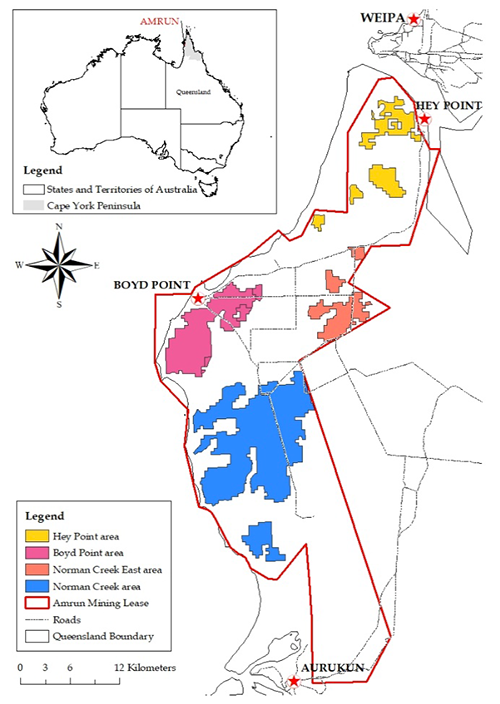Bioenergy in remote Indigenous communities – Utilising woody waste from mine clearing in northern Australia
Bauxite is an important source of Alumina and specific areas in Australia are designated for bauxite mining. Bauxite is mined using an open-cut method as it is relatively close to the surface.
Indigenous communities in northern Australia, own, manage, or have special rights over extensive forest resources and are highly impacted by mining development which requires clearing when the mining shifts to new areas. These areas are often cleared and burnt ahead of mining developments.
Quite often the indigenous communities face low energy security and are disconnected from the power grid and reliant on diesel for their energy needs. The development of small-scale community-based bioenergy industries could provide a solution to support sustainable economic development in this region. Through pre-mining integrated forestry operations, currently wasted forest products from nearby mining developments could be diverted to commercial solid wood products and energy to reduce the environmental impacts of mining and support much-needed community development.
This report explores the potential for woody biomass sourced through integrated forestry operations before bauxite mine clearing to support the energy needs of the remote Indigenous community of Aurukun and two nearby potential bioenergy hubs in western Cape York Peninsula in northern Australia.
Within the Weipa-Aurukun region of western Cape York Peninsula, the case study evaluated:
- a 40-year forecast of forest biomass resources potentially available for commercial generation of bioenergy and biochar at a regional level using forest product inventory and aboveground biomass assessment of the region’s woodlands;
- the spatial and temporal distribution of forest biomass availability for three potential community-based bioenergy hubs in the region according to the anticipated annual forest clearing rate and different supply-demand scenarios; and
- the suitability of wood-fired gasification and pyrolysis systems that could be installed at the proposed hubs using yield-calculations of power and biochar.
This covers a mining area of 103,000 ha. Results show at least 88,000 dry tonnes of forest biomass per year are available in the first thirteen years (from 2021) and almost 100,000 dry tonnes/year between years 14-40. Modelled power yields from gasification show promising results, providing over 60% of the energy demand in two of the three bio-hubs in the next 13 years. Pyrolysis power yields are lower; however, additional biochar yields can be used for local mine rehabilitation and could provide new local Indigenous employment and business opportunities. The findings can inform the mining sector in making more informed land use and energy decisions, and bioenergy industry policymakers and investors wanting to support remote Indigenous community development in places where extractive industry developments are clearing areas of forest.
“This case study integrates the energy and mining sectors, Indigenous communities, local sawmills, and forest management practices in one of the most remote places in the world. Practical implications related to the use of forest biomass are emphasised to benefit economic development in remote Indigenous communities, not only in Australia but globally.”

Figure: The Amrun Mining Lease (AML) and its distinct mining areas (covering 103,000 ha) in the western Cape York Peninsula.


